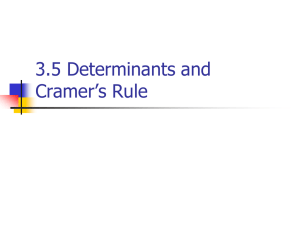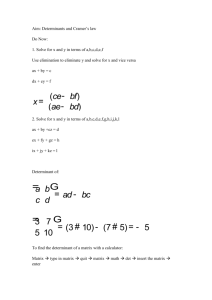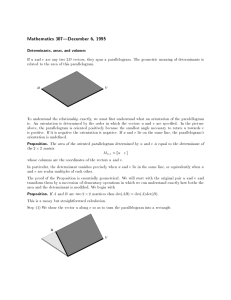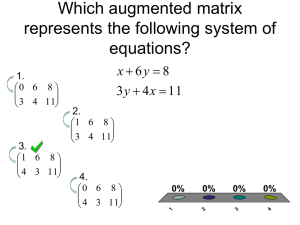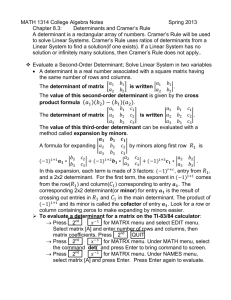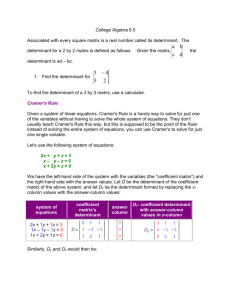6.3 Geometric interpretations of the determinant
advertisement
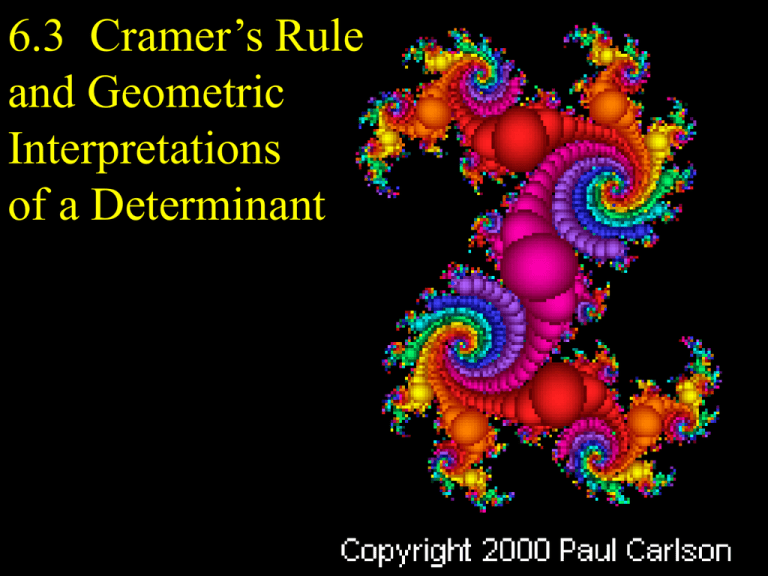
6.3 Cramer’s Rule and Geometric Interpretations of a Determinant Finding area • The determinant of a 2x2 matrix can be interpreted as the area of a Parallelogram (note the absolute values of the determinant gives the indicated area) • find the area of a parallelogram • (see next slide for explanation) For more information visit http://www-math.mit.edu/18.013A/HTML/chapter04/section01.html • 2 × 2 determinants and area • Recall that the area of the parallelogram spanned by a and b is the magnitude of a×b. We can write the cross product of a = a1i + a2j + a3k and b = b1i + b2j + b3k as the determinant • a×b= . • Now, imagine that a and b lie in the plane so that a3 = b3 = 0. Using our rules for calculating determinants we see that, in this case, the cross product simplifies to • a × b = k. • Hence, the area of the parallelogram, ||a × b||, is the absolute value of the determinant Volume Determinants can also be used to find the volume of a parallelepiped Given the following matrix: Det(A) is can be interpreted as the volume of the parallelpiped shown at the right. • 3 × 3 determinants and volume • The volume of a parallelepiped spanned by the vectors a, b and c is the absolute value of the scalar triple product (a × b) ⋅ c. We can write the scalar triple product of a = a1i + a2j + a3k, b = b1i + b2j + b3k, and c = c1i + c2j + c3k as the determinant • (a × b) ⋅ c = .Hence, the volume of the parallelepiped spanned by a, b, and c is |(a × b) ⋅ c| = . How do determinants expand into higher dimensions? We can not fully prove this until after chapter (a proof is on p. 276 of the text) However if the determinant of a matrix is zero then the vectors do not fill the entire region. (analogous to zero area or zero volume) Cramer’s Rule If one solves this system using augmented matrices the solution to this system is Provided that Another way to find the solution is with determinants Cramer’s Rule states that and Where D is the determinant of A Dx is the Determinant of A with the x column replaced by b Dy is the Determinant of A with the y column replaced by b Note: verify that this works by checking with the previous slide Homework: p. 607 (8.5) Pre-Calc book 1-27 odd Encoding a message
